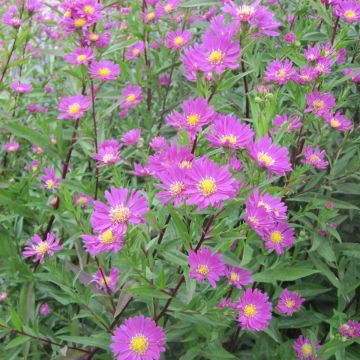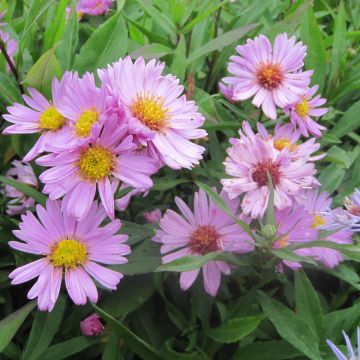Double Asters
Would this plant suit my garden? Set up your Plantfit profile →
Available in 2 sizes
Available in 1 sizes
Available in 2 sizes
Available in 2 sizes
Available in 0 sizes
Available in 1 sizes
Available in 1 sizes
Available in 2 sizes
Available in 1 sizes
Available in 1 sizes
Available in 1 sizes
Available in 2 sizes
Available in 1 sizes
Available in 1 sizes
Available in 1 sizes
Available in 1 sizes
Available in 1 sizes
Available in 1 sizes
Available in 1 sizes
Available in 1 sizes
A selection of double-flowered Asters. Just like the Aster novi-belgii 'Marie Ballard' with its very double blue flowers, the Aster 'Fellowship' which produces pink pompoms, or the dwarf Aster dumosus 'Rosenwitchel', some selections have flowers adorned with multiple rows of coloured petals or ligules. The colour palette includes white, various shades of pink (Aster novi-belgii 'Rosenponpon'), blue, purple or violet. Asters (some of which are now called Symphyotrichum) are plants of the Asteraceae family, known and prized for their small star-shaped inflorescences that bloom in spring, summer or autumn depending on the species and varieties. There are double dwarf asters, ideal for borders, rockeries and containers. Medium-sized double asters to be planted in flower beds or mixed borders, and tall varieties with double flowers to be placed at the back of flower beds. Discover the most beautiful varieties in this selection.
Haven't found what you were looking for?










































































